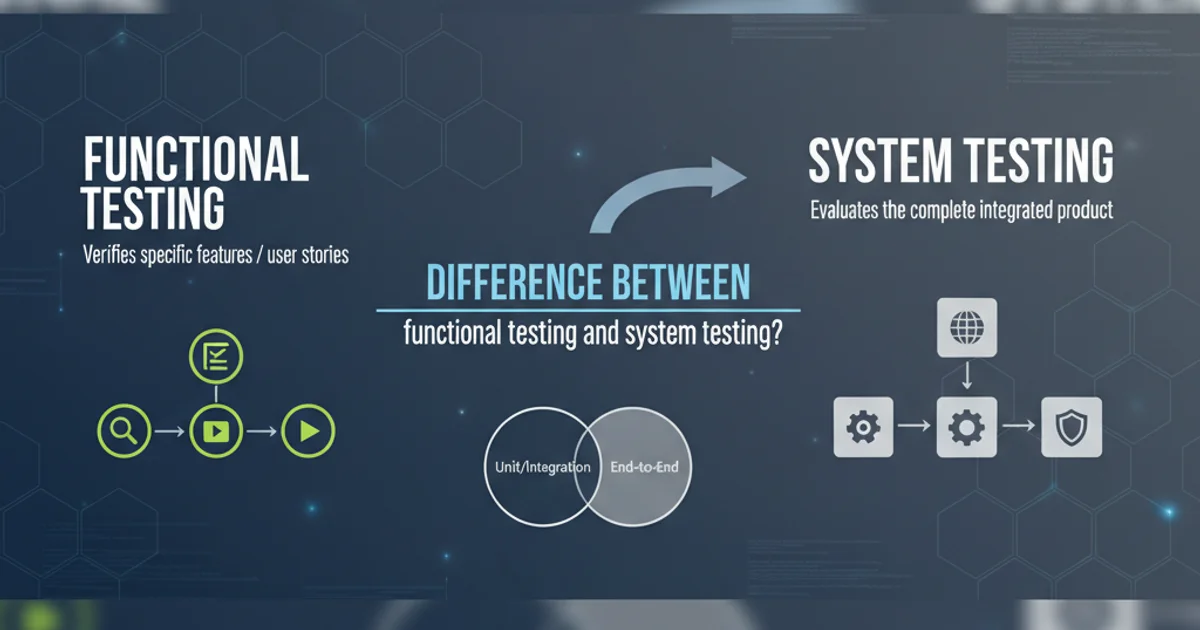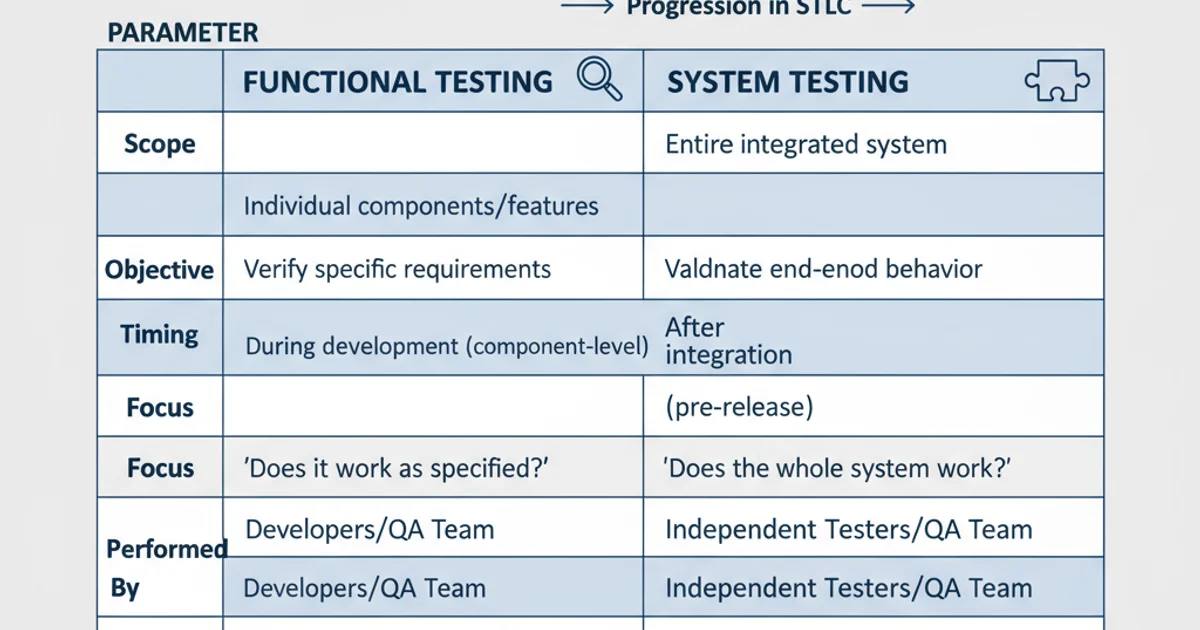difference between functional testing and system testing?
Categories:
Functional Testing vs. System Testing: Understanding the Key Differences

Explore the distinct roles of functional testing and system testing in the software development lifecycle, their objectives, scope, and how they contribute to overall software quality.
In the intricate world of software quality assurance, various testing methodologies are employed to ensure that a product meets its requirements and performs as expected. Among these, functional testing and system testing are two crucial phases, often confused due to their overlapping goals of validating software behavior. However, they serve distinct purposes, operate at different levels of integration, and focus on different aspects of the software. Understanding these differences is key to designing an effective testing strategy and delivering high-quality software.
What is Functional Testing?
Functional testing is a type of black-box testing that verifies each function of the software application against the specified requirements. The primary goal is to check if the software behaves as expected from the user's perspective. It focuses on 'what' the system does, rather than 'how' it does it. This includes testing user interfaces, APIs, databases, security, and client/server communication. Functional tests are typically performed earlier in the development cycle, often at the unit or integration level, to catch defects when they are easier and cheaper to fix.
flowchart TD
A[Requirements] --> B{Identify Functions}
B --> C[Design Test Cases]
C --> D[Execute Tests]
D --> E{Function Works?}
E -- Yes --> F[Pass]
E -- No --> G[Fail & Report Bug]
G --> CFunctional Testing Workflow
What is System Testing?
System testing is a level of testing that validates the complete and fully integrated software product against the specified requirements. It evaluates the system's compliance with its specified requirements, both functional and non-functional, from an end-to-end perspective. Unlike functional testing, which might focus on individual features, system testing treats the software as a whole, interacting with all its components, including hardware, software, and external interfaces. It aims to uncover defects that might arise from the interaction between integrated components, system resources, or environmental factors.
flowchart TD
A[Integrated Modules] --> B{Build Complete System}
B --> C[Execute System Tests]
C --> D{System Meets Requirements?}
D -- Yes --> E[Pass]
D -- No --> F[Fail & Report Bug]
F --> B
C --> G(Non-Functional Testing: Performance, Security, etc.)System Testing Workflow
Key Differences Summarized
While both functional and system testing are crucial for software quality, their scope, objectives, and timing within the software development lifecycle differ significantly. Here's a breakdown of their primary distinctions:

Comparison of Functional Testing vs. System Testing
In essence, functional testing ensures that the individual pieces of the puzzle work correctly, while system testing ensures that the entire assembled puzzle forms the correct picture and functions as a cohesive whole within its intended environment. Both are indispensable for delivering a robust and reliable software product.